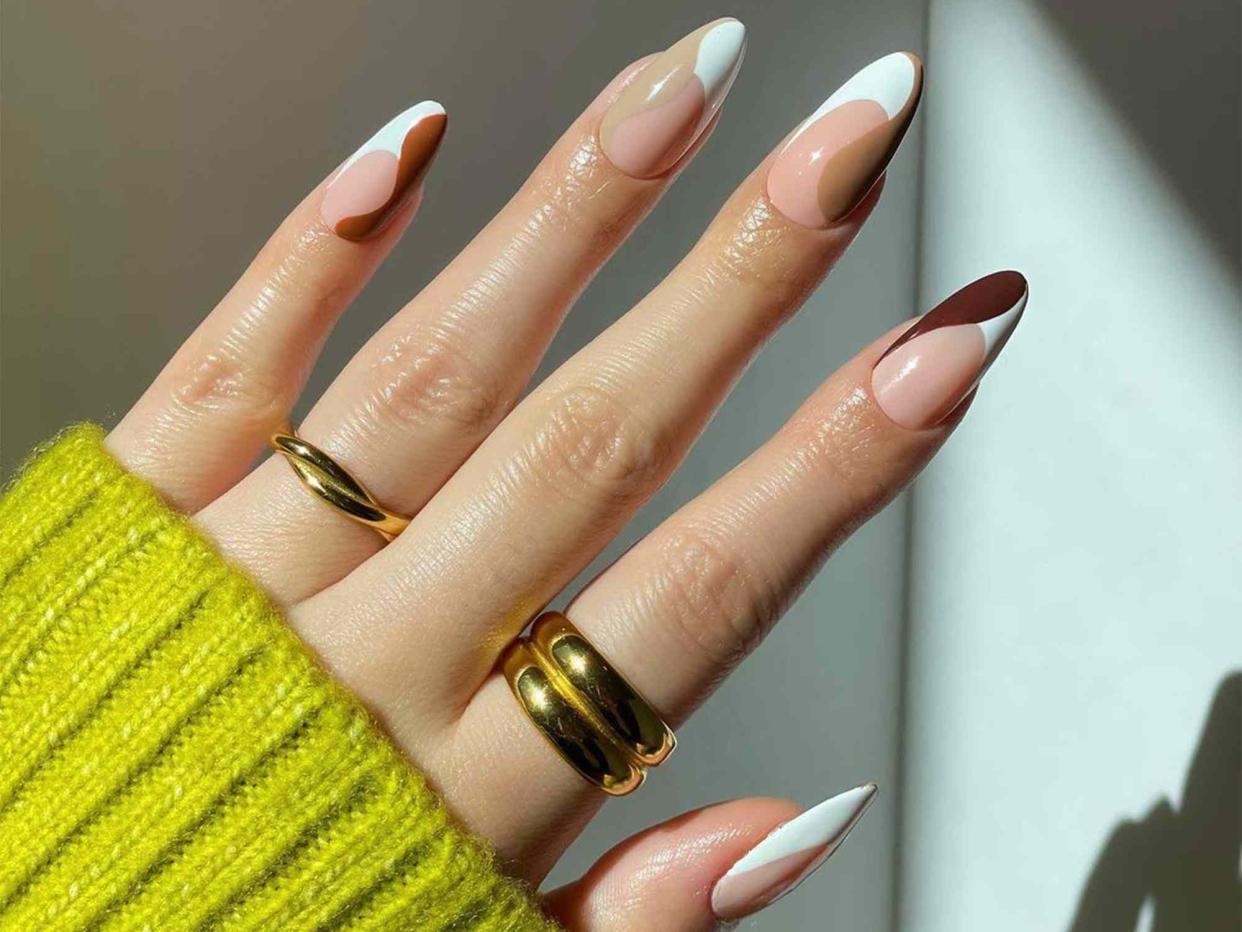UV vs. LED Nail Lamps: Experts Explain the Difference Between the Two

@disseynails / instagram
When it comes to the different manicure types, nothing comes close to the staying power of a gel mani. However, to ensure gel nails last as long as possible, it's important to always use a high-quality gel polish and curing lamp. If you frequently get gel manicures, you're likely familiar with the two types of lamps (UV and LED). But what's the real difference between the two? To find the answer, we went straight to the experts. Ahead, learn everything you need to know about UV and LED nail lamps.
Meet Our Expert
Marisa Garshick, MD, is a board-certified dermatologist and an assistant clinical professor of dermatology at Cornell-New York Presbyterian Medical Center.
Jan Arnold is the co-founder and style director of CND, a leading brand in professional nail, hand, and foot care.
What Is a UV Lamp?
"UV lamps emit ultraviolet radiation, the same that is emitted from the sun and in tanning beds, and can be used to help gel nail polishes harden," Dr. Garshick explains.
Let's get a little more technical. "In many instances, it may also emit some light from the visible spectrum to facilitate the transformation of a nail gel from a liquid state to a solid film," Arnold adds. "It is crucial for the energy output of this lamp to be precisely calibrated to match the specific gel or gel polish systems it is intended to cure."
What Is an LED Lamp?
"LED lamps refer to light emitting diodes which emit light that is both visible and invisible and are thought to be faster than UV lamps at hardening polish," Dr. Garshick says.
To summarize, Arnold explains that an LED curing lamp is a professional nail service curing device that primarily utilizes visible light output. "In many instances, it may also emit some light from the UV spectrum to facilitate the transformation of a nail gel from a liquid state to a solid film," she says. Again, the lamp's energy needs to be calibrated to the specific type of gel it is curing.
UV Lamp vs. LED Lamp
"Both UV and LED professional nail service curing lamps operate similarly, where the gel layer is applied to all five nails before the hand is placed into the lamp for curing," Arnold says. "UV light requires a slightly longer curing time, while LED light cures the gel faster. The result is the same, provided that the gel used is precisely calibrated to the lamp's light output. After curing, the liquid gel transforms into a solid film, preparing the nails for the application of the next layer."
However, there are a few more differences between UV and LED nail lamps. "While LED lamps may also contain UV, it tends to be less than the amount emitted by the UV lamps," Dr. Garshick says. "Additionally, UV lamps require the bulbs be changed more frequently, unlike LED bulbs, which tend to last longer and don't typically need to be replaced."
Tips
"Achieving high shine, flawless wear, excellent removal, and prolonged service longevity is best ensured with a gel system perfectly calibrated to the recommended lamp," Arnold says. "It is advisable to choose a system under a reputable brand name."
Is One Safer Than the Other?
According to Arnold, UV and LED lamps are considered safe for recommended use since the client's exposure time is minimal during each appointment. "The light output is comparable to a brief walk to the mailbox and back within that time frame," she says. "The safety levels of the output have been thoroughly tested and confirmed by Dr. Robert Sayre, the creator of the SPF rating system. In cases where clients have extreme sensitivity to light, the nail professional can place a cloth over the top of the hand during curing when necessary. However, the service is comfortable and efficient for most clients, ensuring a positive experience."
With this in mind, Dr. Garshick says taking precautions is still important. "While LED light may be considered safer when compared to UV lamps given there is less exposure to UV radiation, it is still important to be cautious when using LED lamps, as LED lamps may still emit some UV light," she warns. "For this reason, regardless of what type of lamp is used, it is important to protect the skin with sunscreen or UV-protecting gloves."
The Final Takeaway
Gel manicures have become a popular option thanks to the quick drying time—and this is all possible with the help of UV and LED lamps. Both have been deemed safe and can cure gel polish in seconds. And as our experts mentioned, the differences between the two are minimal. For example, LED lamps tend to cure polish faster, and their bulbs don't need to be replaced as often. Regardless of which one you or your nail tech use, rest assured you'll love the results of your gorgeous gel manicure.
Up Next: Do Gel Manicures Really Cause UV Damage?
Read the original article on Byrdie.

